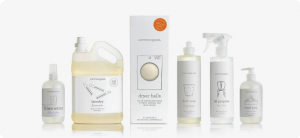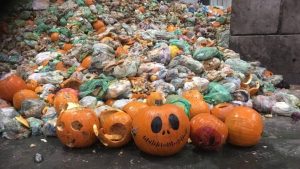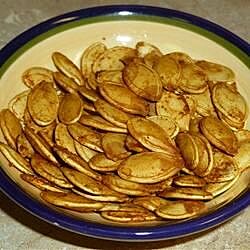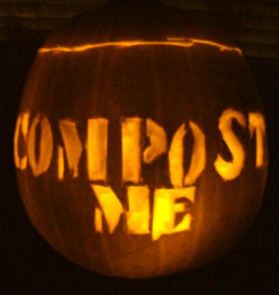You’re probably cleaning your house, room, apartment, or wherever you reside weekly or every other week – at least you probably should be. And it’s tempting to buy those products with the flashy labels that seem like they’ll clean your space best, but those can be harmful to the environment. Even some items labeled “green” are not necessarily any better because they are subject to green-washing, which the Oxford English Dictionary defines as “the creation or propagation of an unfounded or misleading environmentalist image” (OED).

One product guilty of this is Simple Green Concentrated All-Purpose Cleaner. While the green packaging and title seem environmental and user friendly, that could not be further from the truth. One chemical found in this product, 2-butoxyethanol, is said to be “a solvent absorbed through the skin that damages red blood cells and irritates eyes” (CBS, 2012). Another harmful product is Spic and Span Multi-Surface and Floor Cleaner, which contains a chemical that is “persist[ant] in the environment and has been found toxic to aquatic life” (CBS, 2012). This chemical – ethoxylate – has already been “banned for sale in the European Union” (CBS, 2012). It can be confusing and overwhelming when you’re buying cleaning products because there are so many options, so the chances are pretty high that you don’t know what is safest and most sustainable.
Thankfully, the United States Environmental Protection Agency (EPA) oversees the “Safer Choice program, which certifies products that contain safer ingredients for human health and the environment” (EPA). This program is useful in giving cleaning product consumers a better idea of what is actually sustainable, so they are not fooled by greenwashing labels. The EPA compiles a list of more sustainable options by paying attention to VOC (volatile organic compounds) content, safer chemicals, renewable resources, sustainable packaging, and more.
So you may be asking yourself, “what can I do?” The answer is pretty simple: educate yourself, avoid harmful products, and invest in more sustainable cleaning supplies. Some sustainable cleaning brands you should try to incorporate into your cleaning routine are Grove Collaborative, Common Good, and ECOS (The Good Trade). As The Good Trade says, “these natural and eco-friendly household cleaning brands are consciousof your family’s health and the wellbeing of the earth”( The Good Trade). They are great opportunities to introduce sustainability into your cleaning routine, and some of them even have refillable options to reduce single use plastic waste!
There is an additional option to the green cleaning initiative, which is making your own products. If you want to put in a little bit of work for what might be the most sustainable option of all for an all-purpose cleaner, just mix these ingredients together: ½ cup vinegar, ¼ cup baking soda, and 4 to 8 cups hot water in a spray bottle” (WebMD). You can even add a little bit of an essential oil of your choice if you want to add a scent. For my personal all-purpose cleaner, I went with a lemon scent, which is subtle, yet effective.
If you’re looking for ways to incorporate sustainability in your routine without switching your lifestyle up too much, green cleaning is for you. It implements sustainable options in place of something you already do, so it isn’t too hard to add! I highly suggest trying out some of the above brands or following the steps to create your own cleaner, for both your health and the earth’s.
Resources
”greenwashing, n.” OED Online. Oxford University Press, March 2022. Web. 26 April 2022.
“Identifying Greener Cleaning Products.” EPA, last updated 26 March 2022. https://www.epa.gov/greenerproducts/identifying-greener-cleaning-products.
“EWG’s ‘Hall of Shame’ of toxic household cleaners.” CBS News, 12 September 2012, https://www.cbsnews.com/pictures/ewgs-hall-of-shame-of-toxic-household-cleaners/.
“10 Natural and Eco-Friendly Cleaning Products For The Conscious Home.” The Good Trade, https://www.thegoodtrade.com/features/natural-eco-friendly-cleaning-products-for-the-conscious-home.
“Guide to Natural Cleaning.” Web MD, medically reviewed by Melinda Ratini, DO, MS, 19 April 2021. https://www.webmd.com/a-to-z-guides/ss/slideshow-guide-to-natural-cleaning#:~:text=For%20mild%20cleaning%2C%20mix%201,give%20it%20a%20fresh%20scent.

 om baked in the oven. There are so many delicious, easy recipes for pumpkin seeds. Feeling savory? Try
om baked in the oven. There are so many delicious, easy recipes for pumpkin seeds. Feeling savory? Try  our skin, get rid of it and give back to the earth it came from. By composting your pumpkin instead of si
our skin, get rid of it and give back to the earth it came from. By composting your pumpkin instead of si